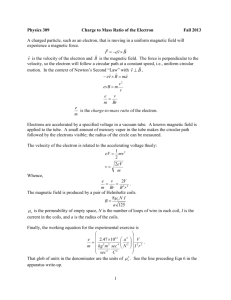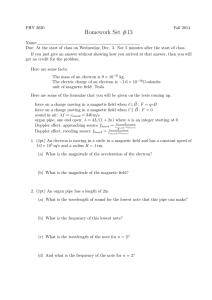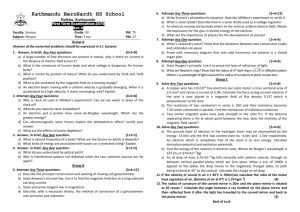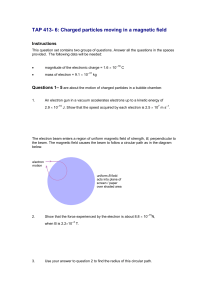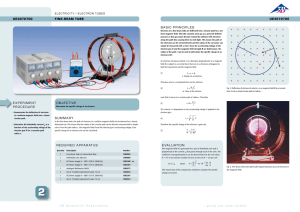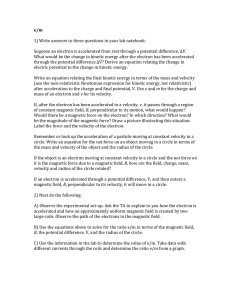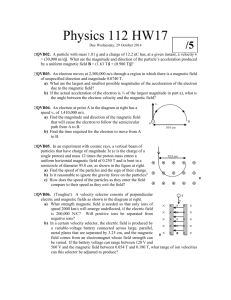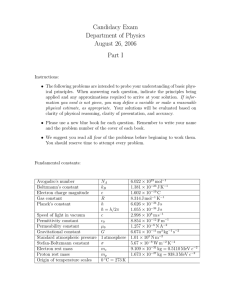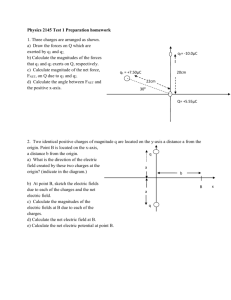Measuring e/m of electron using electric and
advertisement
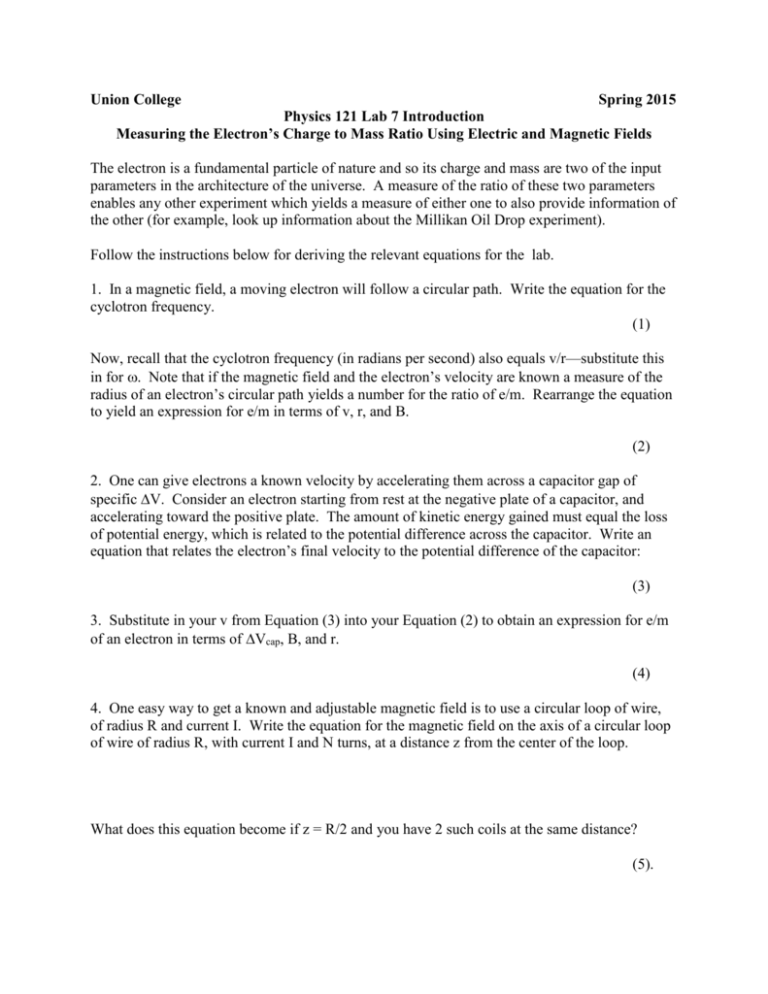
Union College Spring 2015 Physics 121 Lab 7 Introduction Measuring the Electron’s Charge to Mass Ratio Using Electric and Magnetic Fields The electron is a fundamental particle of nature and so its charge and mass are two of the input parameters in the architecture of the universe. A measure of the ratio of these two parameters enables any other experiment which yields a measure of either one to also provide information of the other (for example, look up information about the Millikan Oil Drop experiment). Follow the instructions below for deriving the relevant equations for the lab. 1. In a magnetic field, a moving electron will follow a circular path. Write the equation for the cyclotron frequency. (1) Now, recall that the cyclotron frequency (in radians per second) also equals v/r—substitute this in for . Note that if the magnetic field and the electron’s velocity are known a measure of the radius of an electron’s circular path yields a number for the ratio of e/m. Rearrange the equation to yield an expression for e/m in terms of v, r, and B. (2) 2. One can give electrons a known velocity by accelerating them across a capacitor gap of specific V. Consider an electron starting from rest at the negative plate of a capacitor, and accelerating toward the positive plate. The amount of kinetic energy gained must equal the loss of potential energy, which is related to the potential difference across the capacitor. Write an equation that relates the electron’s final velocity to the potential difference of the capacitor: (3) 3. Substitute in your v from Equation (3) into your Equation (2) to obtain an expression for e/m of an electron in terms of Vcap, B, and r. (4) 4. One easy way to get a known and adjustable magnetic field is to use a circular loop of wire, of radius R and current I. Write the equation for the magnetic field on the axis of a circular loop of wire of radius R, with current I and N turns, at a distance z from the center of the loop. What does this equation become if z = R/2 and you have 2 such coils at the same distance? (5).
